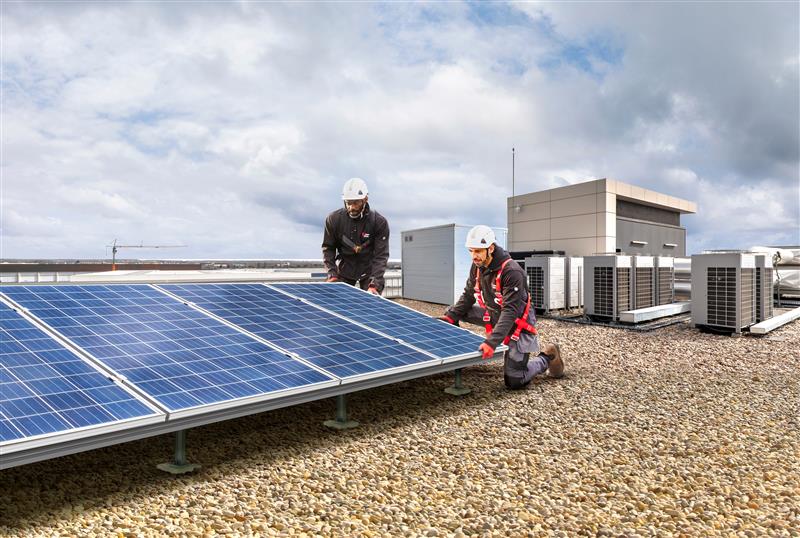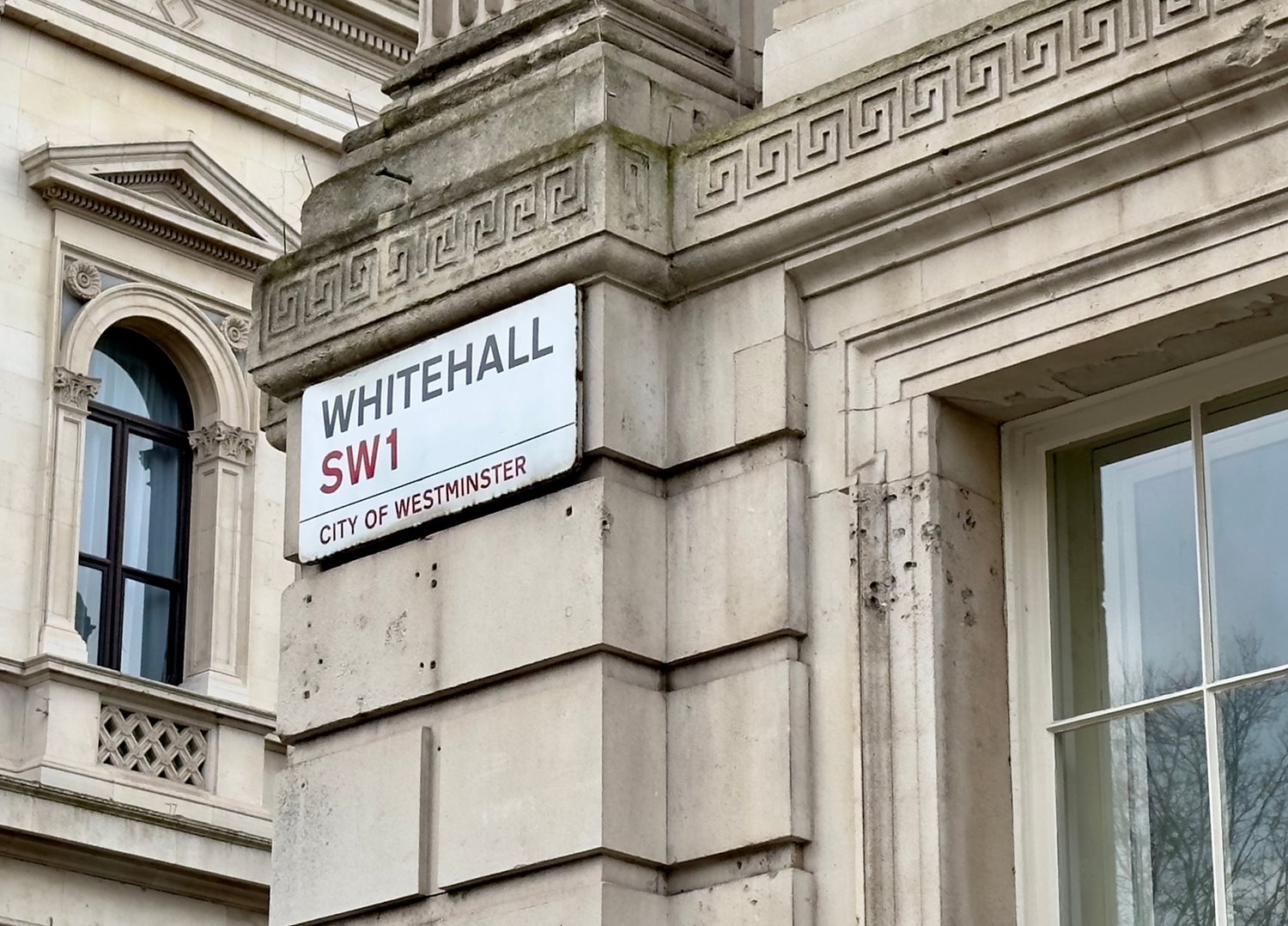The Institution of Engineering and Technology (IET) and the British Standards Institution (BSI) have published a Draft for Public Consultation (DPC) on Amendment 4:2026
The Institution of Engineering and Technology (IET) and the British Standards Institution (BSI) have published a Draft for Public Consultation (DPC) on Amendment 4:2026 to BS 7671:2018 IET Wiring Regulations. Sam Donaghy, Head of Technical Advice and Guidance at NICEIC, outlines the main proposals and explains why it’s so important to have your say.
At NICEIC, we’re encouraging everyone with an interest in the outcome of the proposals to look at them and take the time to comment. The DPC is open until 3 November, so there’s still a fantastic opportunity for you to really make a difference.
The proposed changes cover a wide range of issues. Some of these are specialised, but others will affect almost everyone working in the industry, so we really do need you to have your say. We understand and appreciate you’re all busy; but if you think this doesn’t affect you, just take a look at some of the proposed changes.
These cover everything from TN-S earthing arrangements and bringing conductors into ferromagnetic enclosures, to RCDs in outdoor lighting installations, arc fault detection devices (AFDDs) on electric vehicle charging installations (EVCIs), power over ethernet, and battery storage systems. There’s also a new section on functional earthing and functional-equipotential-bonding for information and communication technology (ICT) equipment.
This is a huge list, so there will be very few electricians who aren’t affected. At NICEIC, we will of course be putting in our views on the proposals. But that’s just one voice; if you comment individually, your voice gets viewed equally, so please take the time to get involved.
You can have an influence
The DPC (published 7 August 2024), seeks feedback on a proposed amendment (Amendment 4:2026) to the current BS 7671:2018+Amendment 3:2024 IET Wiring Regulations.
The consultation runs for 12 weeks, closing on 3 November, and the final amendment is expected to be published in 2026.
Many of the proposed changes reflect fast changing technologies and, as such, will affect those working in growing markets, or looking to expand their businesses.
There are a lot of proposals. But the size and scale of the document shouldn’t put people off participating. You can decide which areas have most impact on you, or those you are most interested in and want to influence.
The DPC has been divided into four sections. This is purely for ease of review and to speed up responses because it’s a very large live document with multiple people accessing it simultaneously.
To further improve navigation, there are some downloadable documents, which are easier to read. We suggest you look at these, make notes, and then, when you’ve decided you want to comment, go to the live documents.
To help you identify the changes quickly and clearly, all the documents show proposed new or replacement text in green and proposed deletions in red-strikethrough text. The blue text shows links within the document.
What are the changes?
The sheer number of changes might seem daunting, but one of the downloadable documents (BS 7671+Amendment 4_Part1.pdf) summarises the proposed changes on pages 42 to 44.
This is a really good place to start, and means you can easily pick the areas you already work in, or might be interested working in.
At NICEIC, we’ve also highlighted some of the primary areas of change. These include:
What does it mean for me?
Once Amendment 4 is published in 2026, we will all have to work with it for four to five years. So, it’s crucial you look at which areas might affect you and make your voices heard.
Some of the changes are wide-ranging and affect most electricians. And then there are specialist areas and new sections that will interest those already working in these areas or planning to do so.
The proposals around TN earthing systems are a good example of something that affects most people. These include a note introducing a requirement to enquire about the type of earthing system where it appears a TN-S system earthing arrangement has been provided and the type of arrangement cannot be ascertained by any other means. Regulation 312.2.1.1 also now includes protective neutral bonding (PNB) figures and requirements.
We suggest you look at these, and the other proposals, and while you’re reviewing them, ask yourself: what impact does that have?
Some people say to us: “Amendment 4 has nothing to do with me”. But when we explain what it covers, they realise that changes such as this have an effect on everyone, so they’re really important.
The proposal to change how we handle cables entering ferromagnetic enclosures is something else people are talking about a lot. Most of us get involved in bringing conductors into ferromagnetic enclosures, so again it’s something that potentially affects us on a day-to-day basis. If you want to influence the outcome, go and read what’s being put forward and have your say.
Key areas of interest
Some of the proposed new sections and chapters will be key areas of interest for many electricians. Section 545, which focuses on ICT, contains information that has never been in BS 7671 before. So, if that’s the world you work in or dip into, please have a look. It includes proposed regulations for sizing of conductors, identification of conductors and labelling associated with them.
Chapter 57 is also new and focuses on stationary secondary batteries. This deals with requirements for stationary secondary battery installations where the designed purpose is for storage and supply of electrical installations. This is a rapidly growing area of technology, and an expanding market within the electrical industry. If you’re interested in this area, it’s really important to provide your input.
In Part 7 (special installations or locations), there are several key areas of potential interest. For example, there are a lot of proposed additions and changes associated with medical locations, including a proposed record schedule for supplementary protective equipotential bonding system tests. Again, if that’s one of your areas, we strongly recommend you go and comment.
More broadly, we know lots of us get involved in outdoor lighting. So, similarly, look at the proposal there, which clarifies and rectifies some issues with RCDs to provide additional protection.
Other proposals in Part 7 include the introduction of a new Section 716 on power over ethernet, and changes to Section 722 on EVCIs. There are not many changes to Section 722, but an important one is a clarification regarding the omission of AFDDs.
How do I submit my views?
The process for submission is designed to be user friendly, but if you haven’t done it before, we’ve put together a simple step-by-step guide.
If there’s already a comment posted, you can read it. Seeing what other people are saying can help you formulate your own thoughts or response. Even if you agree with existing comments, still add your view because it gives it more weight if multiple people are saying the same thing.
To ensure the technical committees can review your comments, you must make it clear what you are commenting on and what you propose to change, improve, add or amend.
We need you
The deadline to submit comments is 3 November 2024, so please read the documents and make your comments now. If you miss the chance to have your say at this point, you’ll soon be working on a daily basis with what other people have decided.
If you’ve never responded to a DPC before, it’s a fantastic opportunity to get involved. And it’s perfectly feasible that your comment will be acted upon and represented in Amendment 4 when it’s published in 2026.
Find out more about the main Amendment 4 proposals in the latest episode in our webinar series THE WIRE.
Access the BSI portal.
Watch our video on the DPC for Amendment 4. This covers the key proposals, their implications, why you should respond and how to do it.
At NICEIC, we’re encouraging everyone with an interest in the outcome of the proposals to look at them and take the time to comment. The DPC is open until 3 November, so there’s still a fantastic opportunity for you to really make a difference.
The proposed changes cover a wide range of issues. Some of these are specialised, but others will affect almost everyone working in the industry, so we really do need you to have your say. We understand and appreciate you’re all busy; but if you think this doesn’t affect you, just take a look at some of the proposed changes.
These cover everything from TN-S earthing arrangements and bringing conductors into ferromagnetic enclosures, to RCDs in outdoor lighting installations, arc fault detection devices (AFDDs) on electric vehicle charging installations (EVCIs), power over ethernet, and battery storage systems. There’s also a new section on functional earthing and functional-equipotential-bonding for information and communication technology (ICT) equipment.
This is a huge list, so there will be very few electricians who aren’t affected. At NICEIC, we will of course be putting in our views on the proposals. But that’s just one voice; if you comment individually, your voice gets viewed equally, so please take the time to get involved.
You can have an influence
The DPC (published 7 August 2024), seeks feedback on a proposed amendment (Amendment 4:2026) to the current BS 7671:2018+Amendment 3:2024 IET Wiring Regulations.
The consultation runs for 12 weeks, closing on 3 November, and the final amendment is expected to be published in 2026.
Many of the proposed changes reflect fast changing technologies and, as such, will affect those working in growing markets, or looking to expand their businesses.
There are a lot of proposals. But the size and scale of the document shouldn’t put people off participating. You can decide which areas have most impact on you, or those you are most interested in and want to influence.
The DPC has been divided into four sections. This is purely for ease of review and to speed up responses because it’s a very large live document with multiple people accessing it simultaneously.
To further improve navigation, there are some downloadable documents, which are easier to read. We suggest you look at these, make notes, and then, when you’ve decided you want to comment, go to the live documents.
To help you identify the changes quickly and clearly, all the documents show proposed new or replacement text in green and proposed deletions in red-strikethrough text. The blue text shows links within the document.
What are the changes?
The sheer number of changes might seem daunting, but one of the downloadable documents (BS 7671+Amendment 4_Part1.pdf) summarises the proposed changes on pages 42 to 44.
This is a really good place to start, and means you can easily pick the areas you already work in, or might be interested working in.
At NICEIC, we’ve also highlighted some of the primary areas of change. These include:
- 54 proposed new definitions, symbols or abbreviations, 53 proposed revisions and 15 proposed deletions
- TN earthing
- systems protection against thermal effects, including clarification around cable requirements suitable within protected escape routes
- identification of conductors, primarily related to additional types of conductors associated with ICT
- ferromagnetic enclosures, including a note added that conductors carrying current less than 200A can pass through separate holes
- wiring systems supported so they will not be liable to premature collapse during a fire – a note has been added to explain the intent of this regulation
- a new section added giving additional requirements for functional earthing and functional-equipotential-bonding for ICT equipment
- proposed changes to regulations associated with assemblies and rating of assemblies when there are multiple sources of supply into the same assembly
- a new chapter on requirements for stationary secondary battery installations
- proposals on Electrical Installation Condition Reports, including notes for the person producing the report and guidance for recipient to clarify use of the FI (further investigation) code
- proposals relating to special installations or locations, including changes, for example, in swimming pools and other basins, medical locations, solar PV, outdoor lighting installations, EVCIs, and a new section on power over ethernet.
What does it mean for me?
Once Amendment 4 is published in 2026, we will all have to work with it for four to five years. So, it’s crucial you look at which areas might affect you and make your voices heard.
Some of the changes are wide-ranging and affect most electricians. And then there are specialist areas and new sections that will interest those already working in these areas or planning to do so.
The proposals around TN earthing systems are a good example of something that affects most people. These include a note introducing a requirement to enquire about the type of earthing system where it appears a TN-S system earthing arrangement has been provided and the type of arrangement cannot be ascertained by any other means. Regulation 312.2.1.1 also now includes protective neutral bonding (PNB) figures and requirements.
We suggest you look at these, and the other proposals, and while you’re reviewing them, ask yourself: what impact does that have?
Some people say to us: “Amendment 4 has nothing to do with me”. But when we explain what it covers, they realise that changes such as this have an effect on everyone, so they’re really important.
The proposal to change how we handle cables entering ferromagnetic enclosures is something else people are talking about a lot. Most of us get involved in bringing conductors into ferromagnetic enclosures, so again it’s something that potentially affects us on a day-to-day basis. If you want to influence the outcome, go and read what’s being put forward and have your say.
Key areas of interest
Some of the proposed new sections and chapters will be key areas of interest for many electricians. Section 545, which focuses on ICT, contains information that has never been in BS 7671 before. So, if that’s the world you work in or dip into, please have a look. It includes proposed regulations for sizing of conductors, identification of conductors and labelling associated with them.
Chapter 57 is also new and focuses on stationary secondary batteries. This deals with requirements for stationary secondary battery installations where the designed purpose is for storage and supply of electrical installations. This is a rapidly growing area of technology, and an expanding market within the electrical industry. If you’re interested in this area, it’s really important to provide your input.
In Part 7 (special installations or locations), there are several key areas of potential interest. For example, there are a lot of proposed additions and changes associated with medical locations, including a proposed record schedule for supplementary protective equipotential bonding system tests. Again, if that’s one of your areas, we strongly recommend you go and comment.
More broadly, we know lots of us get involved in outdoor lighting. So, similarly, look at the proposal there, which clarifies and rectifies some issues with RCDs to provide additional protection.
Other proposals in Part 7 include the introduction of a new Section 716 on power over ethernet, and changes to Section 722 on EVCIs. There are not many changes to Section 722, but an important one is a clarification regarding the omission of AFDDs.
How do I submit my views?
The process for submission is designed to be user friendly, but if you haven’t done it before, we’ve put together a simple step-by-step guide.
- All comments need to be submitted on the BSI Standards Development portal.
- You have to register once and then you can log in whenever you want to re-enter the documents. In the search bar, type either BS 7671 or 7671.
- When you open the four separate documents for comments, you will see links to “Add/View comments”.
- If you select the “Add/View comments” link, any comments already recorded will show in a “View comments” box.
If there’s already a comment posted, you can read it. Seeing what other people are saying can help you formulate your own thoughts or response. Even if you agree with existing comments, still add your view because it gives it more weight if multiple people are saying the same thing.
To ensure the technical committees can review your comments, you must make it clear what you are commenting on and what you propose to change, improve, add or amend.
We need you
The deadline to submit comments is 3 November 2024, so please read the documents and make your comments now. If you miss the chance to have your say at this point, you’ll soon be working on a daily basis with what other people have decided.
If you’ve never responded to a DPC before, it’s a fantastic opportunity to get involved. And it’s perfectly feasible that your comment will be acted upon and represented in Amendment 4 when it’s published in 2026.
Find out more about the main Amendment 4 proposals in the latest episode in our webinar series THE WIRE.
Access the BSI portal.
Watch our video on the DPC for Amendment 4. This covers the key proposals, their implications, why you should respond and how to do it.
.png)






